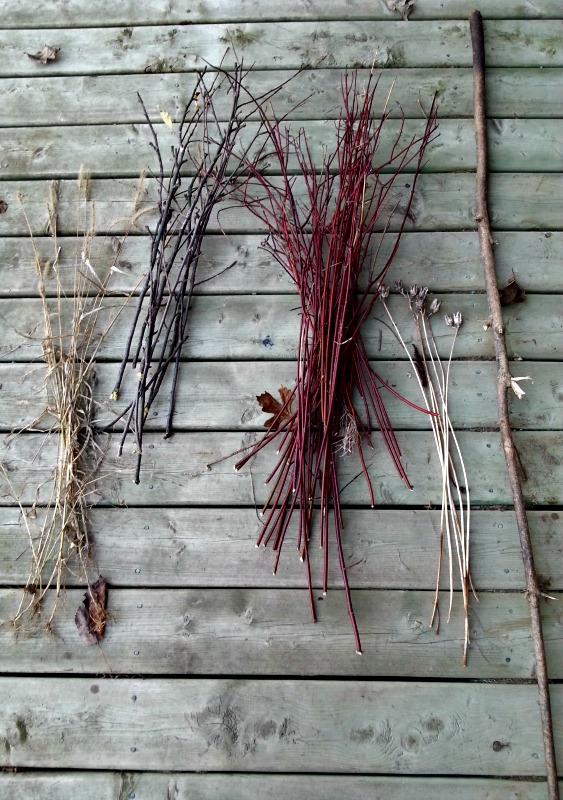
The wedding broom is popular amongst both the Celtic diaspora and the African diaspora. They are also very common in Pagan handfastings. The wedding broom (aka handfasting besom) symbolizes a few different things, and as such, the folks getting married may choose to place emphasis on one or more for their ceremony.
Brooms are often stored by the front or back door of the home, and thus a broom can symbolize a threshold, leaping from your old single life into your new married life. This is similar to the tradition of carrying the bride across the threshold of a new home.
The handle of a broom is somewhat phallic in shape and the brush is shaped somewhat like a woman's skirt, so these two things combined can symbolize fertility and union.
A broom also symbolizes the daily grind of marriage such as cleaning the floors, taking out the trash, making dinner, and caring for one another.
For our handfasting, my future husband and I will be jumping the broom. Here's how I made ours. Hopefully it will inspire you to make your own as well. Let's get started…
Gather your materials

 Marylyle & Jordan's Sephardic, Celtic, Balkan bash
Marylyle & Jordan's Sephardic, Celtic, Balkan bash
The offbeat bride: Marylyle, Librarian (and OBT member) Her offbeat partner: Jordan, Computer Programmer Location & date of wedding: The garden outside UVA Alumni Hall... Read more
The whole length of the finished broom should be long enough that everyone jumping it has a bit of broom to in front of them. I've seen many photos of people jumping a broom that is so short, only one person is actually leaping over the thing. So, stand side by side and measure the length across your shoulders. Adding the broom skirting will increase the overall length and some of your handle will be disappearing into the skirting, so keep this in mind.
Start gathering sticks, lots of sticks. Look around for attractive trees, and remember to thank the tree before you cut. We decided to gather from trees on our property. It's nice to have something from home.
The most important stick is a sturdy branch for your handle. Find one that feels not too thin and not too thick. The handle should be from a hardwood tree.
The skirting twigs are best coming from softer wood trees as they are more flexible and easier to work with. The twigs for the skirting should all be roughly the same length and fairly straight. You can also use rushes, grasses, flower stems, silk or dried flowers, and so forth in addition to the twigs in the skirting.
De-bark and stain or paint the handle
I did a rough de-barking, and then put some nice dark stain on ours. This really stands out from the red toned skirting sticks I was able to find. If you decide to remove the bark, sand it, then paint or stain, this will add days of work to your project. To avoid the extra man hours and all that sanding, you could simply find a branch with attractive bark and leave it natural.

There are two ways to attach the skirting
- One is to make your skirting separately, bundling it all together and then wrapping it firmly with wire. After which you insert the handle up through the skirting, from the bottom, and force it through with some good thumps on the ground.
- The other is to tie the skirting directly onto the handle a layer at a time. This is the way I went, as it's easier to get just the right look. To do this I used a combination of strong fishing line and hot glue gun magic. My man helped by showing off his ability to tie fisherman's knots while I held the twigs in place.

Make it pretty!
You can add decorative touches with a dab of hot glue and inserting them into the skirting. Then the line and glue can be hidden under ribbon, cloth, wire or twine. I also added some decorations to the top of the broom to even it out.
That's the basics, folks. Now you can add your own personal touches and have a wedding broom just as awesome as the rest of your wedding!

What do you DO with the thing after the wedding?
What do you DO with the thing after the wedding? You hang it, of course! They look great over a doorway, or above the mantle, even better if crossed with a sword. We just might hang ours in the foyer with Glamdring (Gandalf's sword).






Your broom is really beautiful and charming, with those rich natural colours. (In addition to obviously being a meaningful part of your ceremony plans!) Kudos on a great DIY!!!
Should the material that‘s used to mask the wire/fishing line that binds the skirt to the broom handle, match the ribbon/material used to intertwine the hands during the ceremony? And when does the broomjumping take place…who goes first, second, etc?
Thanx?
Love your broom!
I have a question. I live in the part of the world where winter is -40. I have my wedding planned for April, it will still be pretty cold out with lots of snow on the ground. Anyways would you recommend me making my broom now, or should I gather everything later on closer to the date.
I suggest making it in February or March. I’m in Canada myself, so I understand winter worries. Our wedding was in May, but I made the broom in February. One bonus to this, is you don’t have to strip leaves off the branches you cut, and it’s easier to see which branches are nicest in the winter.
You neglected that the broom is a tradition in the African American community and it has roots in slavery. Slaves were not allowed to marry, so they created the broom tradition to symbolize the transition form single to married life. That’s the most popular usage of the wedding broom in the United States.
‘Marriage over the broom’ just means it is not a legally binding marriage. It is not appropriation in any way to Africans or to Pagans. They have been using this phrase in England and Wales for centuries to describe a unity of two people/clans that have not been blessed by a priest. It is said this phrase became popular after Christianity was introduced into the UK where local communities wished for a union but couldn’t wait for the priest to turn up for several months.